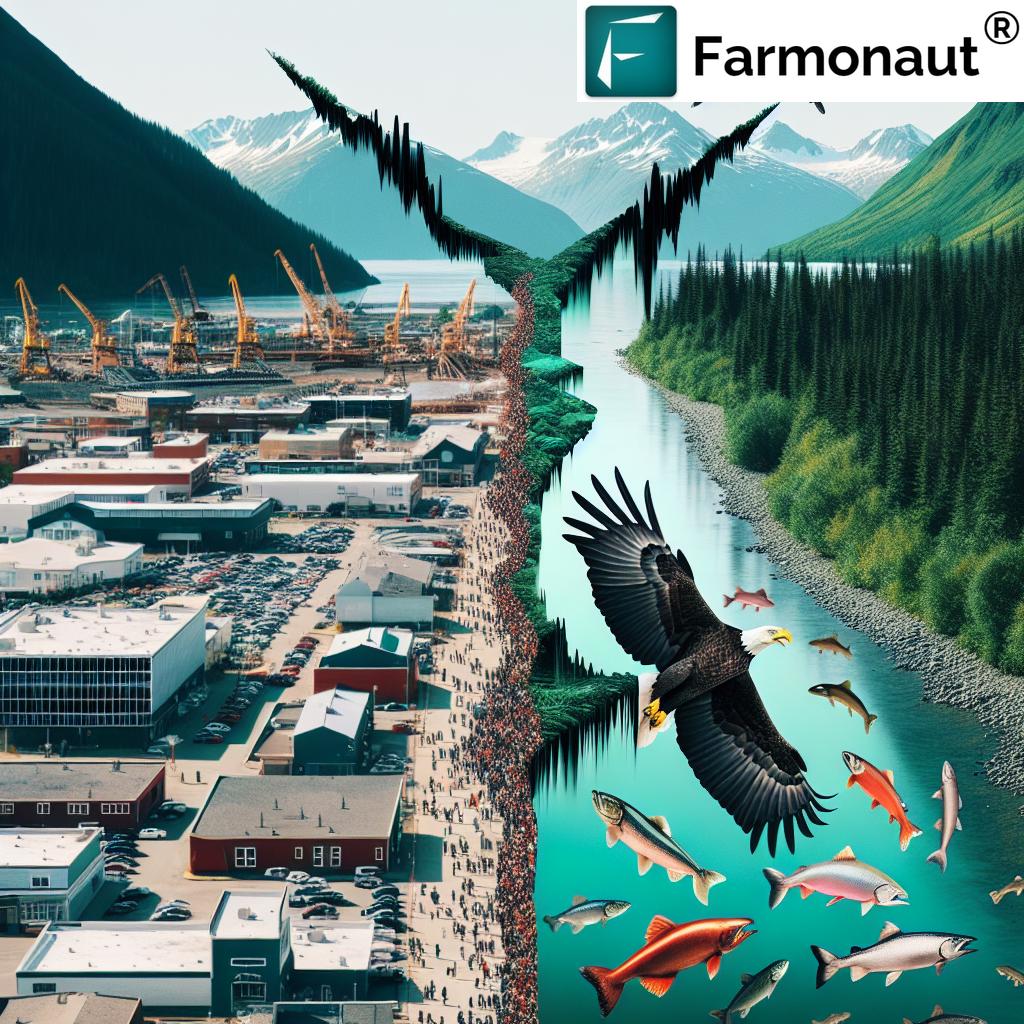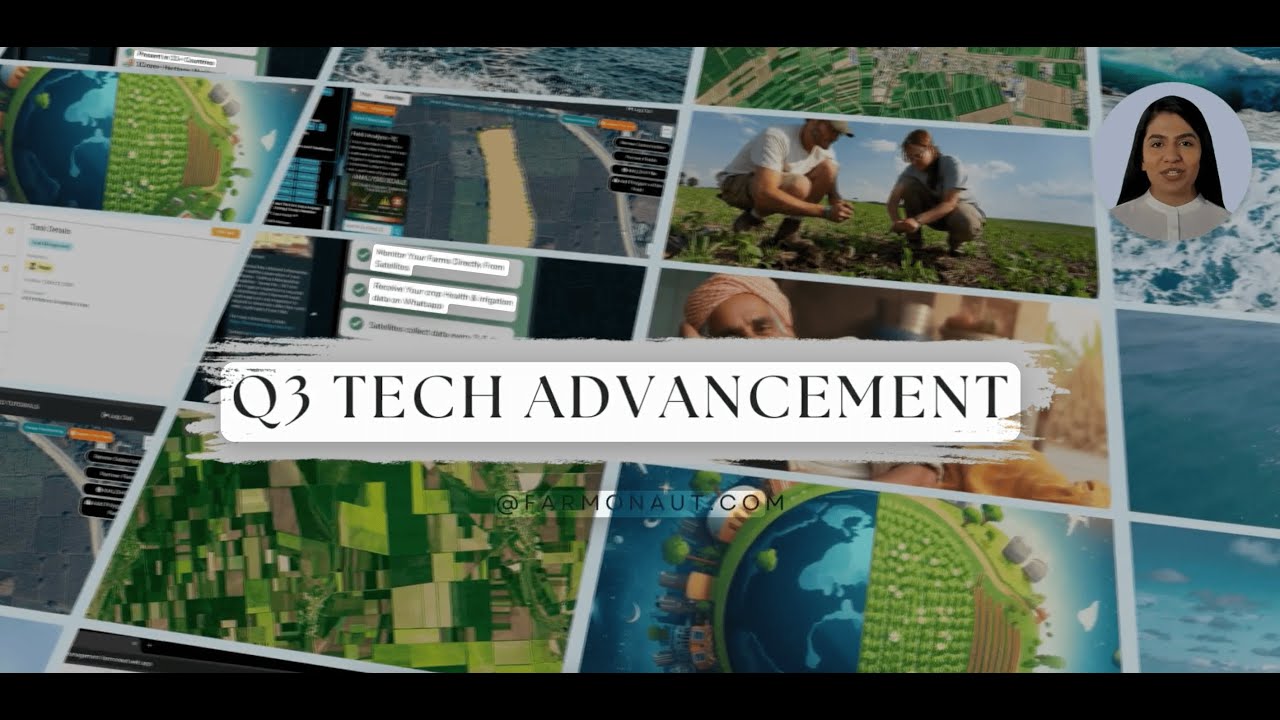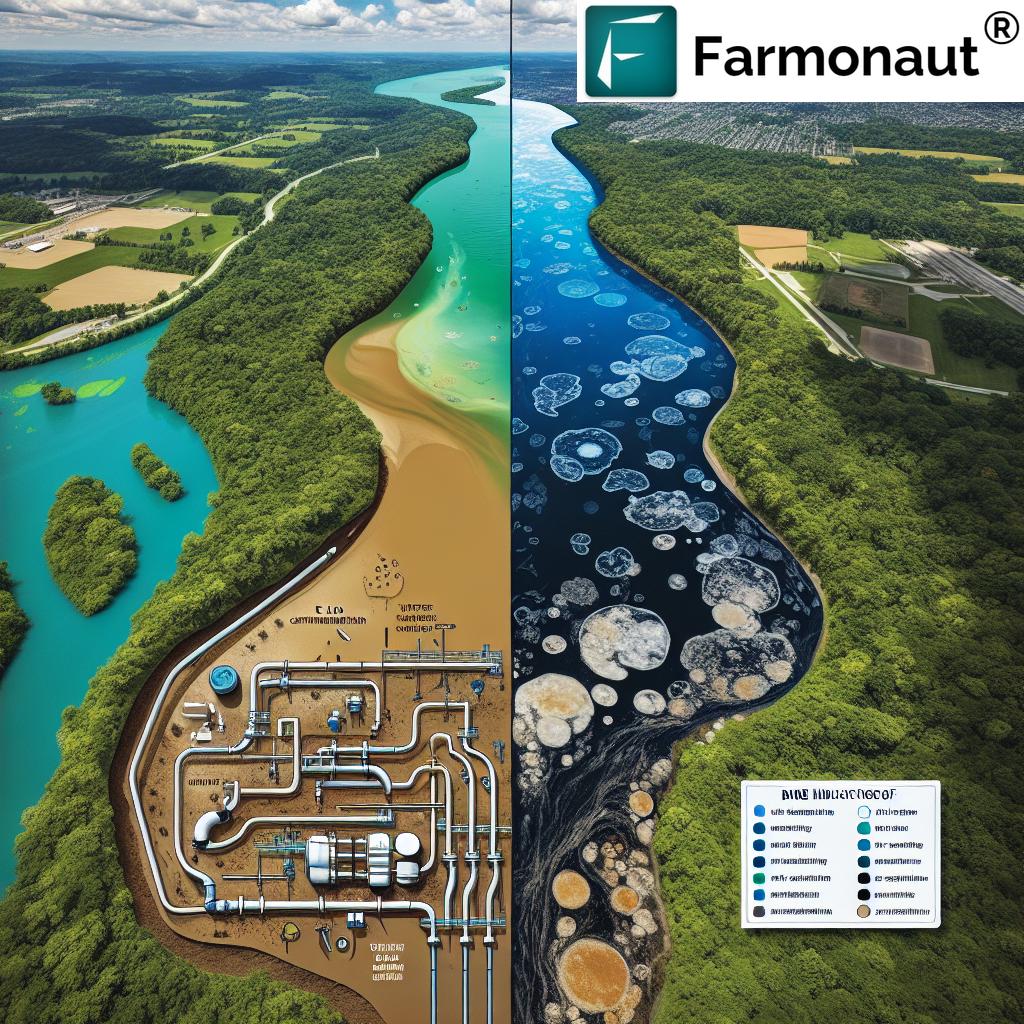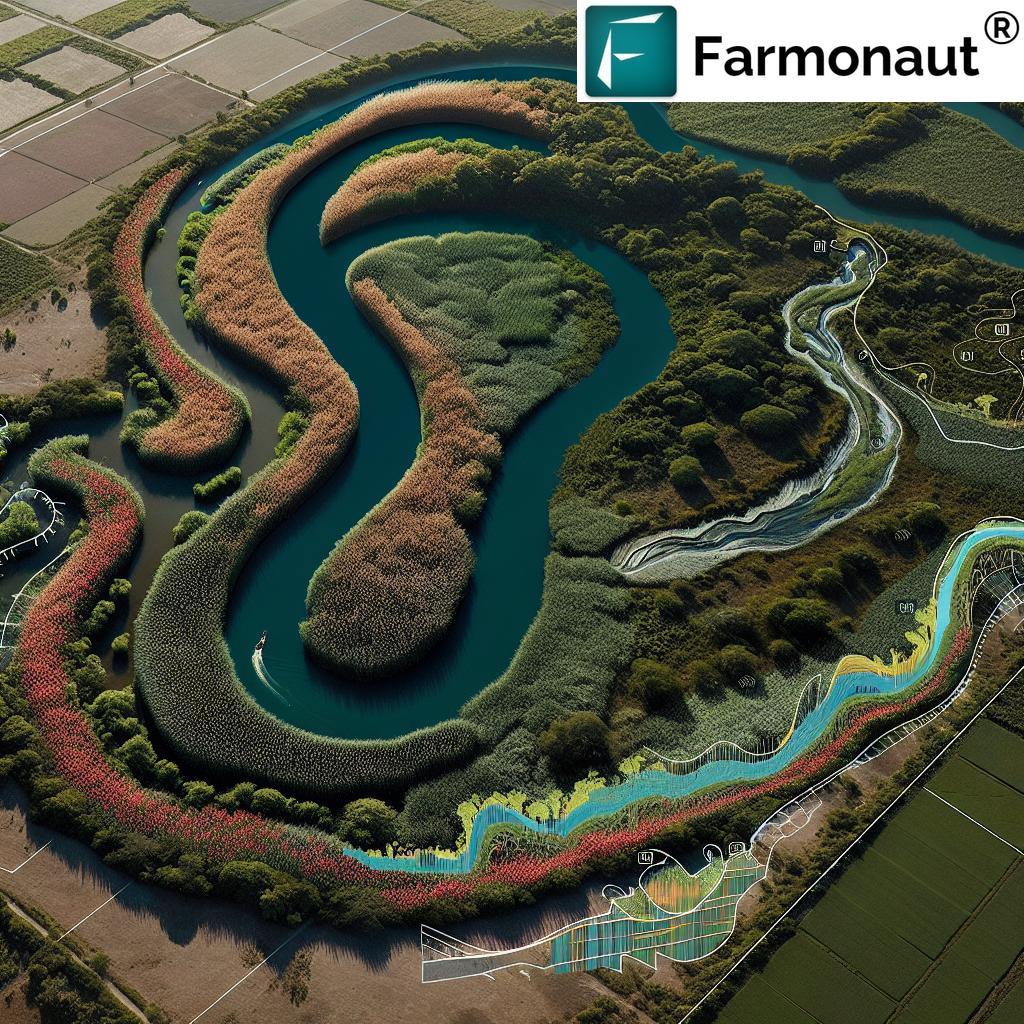Alaska’s Mining Dilemma: Balancing Economic Growth and Environmental Preservation in Haines
“The proposed Alaska mining project near Haines could extract zinc, copper, and precious metals from an area close to the Chilkat River.”
In the rugged wilderness of southeast Alaska, a contentious debate is unfolding that exemplifies the delicate balance between economic development and environmental preservation. The proposed Palmer Project, an underground hard-rock mining operation near Haines, has ignited passionate discussions among local communities, environmentalists, and industry advocates. As we delve into this complex issue, we’ll explore the potential benefits and risks associated with this ambitious venture, and how it aligns with broader national resource development goals.
The Palmer Project: An Overview
The Palmer Project is an exploration endeavor located approximately 17 miles upstream from the Chilkat Indian Village of Klukwan, near Glacier Creek. This proposed mining site has garnered significant attention due to its proximity to the Chilkat River, a vital waterway renowned for its salmon runs and cultural significance to the Tlingit people.
American Pacific Mining, the company behind the project, aims to extract valuable minerals including zinc, copper, silver, and gold from this resource-rich area. The project’s potential economic impact is substantial, promising job creation and revenue generation for the local economy. However, the environmental risks associated with mining operations in such a sensitive ecosystem have raised serious concerns among local residents and conservation groups.

Economic Potential vs. Environmental Concerns
The Palmer Project presents a classic dilemma in resource development: how to balance the promise of economic growth with the imperative of environmental stewardship. Let’s examine both sides of this complex equation:
Economic Benefits
- Job Creation: The mining operation could bring high-paying jobs to the region, potentially employing hundreds of workers.
- Revenue Generation: Mineral extraction could provide a significant boost to local and state economies through taxes and royalties.
- Infrastructure Development: The project might lead to improvements in local infrastructure, benefiting the broader community.
Environmental Concerns
- Water Quality: There are fears that mining operations could contaminate the Chilkat River and its tributaries, threatening salmon populations.
- Ecosystem Disruption: The project’s proximity to sensitive habitats raises concerns about its impact on local wildlife and plant species.
- Seismic Risks: The area’s vulnerability to earthquakes and landslides adds an extra layer of environmental risk to the mining operations.
As we consider these competing factors, it’s crucial to recognize the importance of sustainable practices in resource development. Companies like Farmonaut, which offers carbon footprinting solutions, demonstrate how technology can play a role in monitoring and mitigating environmental impacts across various industries, including mining.
Community Perspectives
The proposed mining project has divided the Haines community, with passionate voices on both sides of the debate:
Supporters
Those in favor of the Palmer Project emphasize the potential economic benefits:
- Job opportunities in a region with limited employment options
- Increased tax revenue to support local services and infrastructure
- Potential for spin-off businesses and economic diversification
Opponents
Critics of the project highlight the environmental and cultural risks:
- Threats to the salmon fishery, which is vital for subsistence and commercial fishing
- Potential contamination of water resources
- Disruption of traditional ways of life for indigenous communities
“Southeast Alaska’s economy and ecosystem face a pivotal decision as stakeholders debate the balance between job creation and environmental preservation.”
The debate surrounding the Palmer Project underscores the need for comprehensive environmental monitoring and sustainable resource management. In this context, technologies like those offered by Farmonaut could play a crucial role in ensuring responsible development practices. For instance, Farmonaut’s traceability solutions could be adapted to monitor and verify environmental compliance in mining operations, providing transparency and accountability throughout the extraction process.
Regulatory Framework and Approval Process
The Palmer Project is subject to a rigorous regulatory process involving multiple agencies:
- Alaska Department of Natural Resources (DNR): Responsible for approving exploration plans and overseeing land use.
- Bureau of Land Management: Involved in federal land management aspects of the project.
- Environmental Protection Agency (EPA): Ensures compliance with federal environmental regulations.
The approval process includes environmental impact assessments, public comment periods, and detailed analysis of the project’s potential effects on local ecosystems and communities. This multi-layered approach aims to ensure that all aspects of the project are thoroughly evaluated before any final decisions are made.
Technological Innovations in Mining
As the mining industry evolves, technological advancements are playing an increasingly important role in minimizing environmental impacts and maximizing efficiency. Some key innovations include:
- Water Treatment Technologies: Advanced systems for purifying and recycling water used in mining operations.
- Tailings Management: Improved methods for storing and treating mine waste to reduce environmental risks.
- Remote Sensing and Monitoring: Satellite and drone technology for real-time environmental monitoring.
These technological advancements align with the growing emphasis on sustainable mining practices. For example, Farmonaut’s fleet management solutions could be adapted for mining operations to optimize vehicle usage and reduce carbon emissions associated with transportation in and around the mine site.
Comparative Analysis of Mining Project Impacts in Haines, Alaska
| Impact Category | Economic Impacts | Environmental Impacts | Social Impacts |
|---|---|---|---|
| Job Creation | High (Estimated 200+ jobs) | Low | Medium (Local employment opportunities) |
| Mineral Extraction Revenue | High ($100M+ annually) | Medium (Landscape alteration) | Medium (Increased local tax base) |
| Water Quality | Low | High (Risk of contamination) | High (Impact on fishing industry) |
| Salmon Habitat | Low | High (Potential disruption) | High (Cultural and economic significance) |
| Seismic Risks | Medium (Infrastructure investment) | High (Potential for disasters) | Medium (Safety concerns) |
| Traditional Lifestyles | Low | Medium (Changes to land use) | High (Impact on indigenous practices) |
| Community Cohesion | Medium (Economic opportunities) | Low | High (Divisive issue in community) |
National Security and Resource Development
The Palmer Project aligns with broader national goals for resource development and energy independence. The Trump administration’s 2017 executive order emphasized the importance of developing domestic mineral resources to reduce reliance on foreign imports and strengthen national security. This policy framework continues to influence discussions around projects like the Palmer mine.
Key points of the national resource strategy include:
- Reducing dependence on foreign mineral imports
- Strengthening the domestic mining industry
- Enhancing national economic and security interests
While these goals underscore the potential strategic importance of projects like the Palmer mine, they must be balanced against environmental considerations and local community impacts.
Environmental Monitoring and Sustainability
Effective environmental monitoring is crucial for ensuring the sustainability of mining operations. Advanced technologies play a vital role in this process, allowing for real-time data collection and analysis. For instance, Farmonaut’s crop and forest advisory services, while primarily designed for agriculture, demonstrate the potential for satellite-based monitoring systems that could be adapted for environmental oversight in mining operations.
Key aspects of environmental monitoring in mining include:
- Water quality testing and continuous monitoring
- Air quality assessments
- Soil contamination checks
- Wildlife population and habitat studies
Implementing robust monitoring systems can help address community concerns and ensure compliance with environmental regulations throughout the life of the mining project.
Economic Diversification and Sustainable Development
While the Palmer Project offers potential economic benefits, it’s essential to consider long-term sustainability and economic diversification. Mining operations have a finite lifespan, and communities that become overly dependent on a single industry can face significant challenges when resources are depleted or market conditions change.
Alternative economic development strategies for Haines and surrounding areas could include:
- Sustainable tourism initiatives
- Renewable energy projects
- Value-added processing of local resources
- Technology-based industries leveraging the region’s natural beauty and resources
Diversifying the local economy can help create resilience and ensure long-term prosperity beyond the life of any single mining project. Technologies like those offered by Farmonaut could play a role in supporting these diversification efforts, particularly in areas related to sustainable agriculture and resource management.
Community Engagement and Decision-Making
The controversy surrounding the Palmer Project highlights the importance of robust community engagement in the decision-making process. Effective dialogue between mining companies, local residents, indigenous communities, and regulatory bodies is crucial for addressing concerns and finding common ground.
Key elements of successful community engagement include:
- Transparent communication of project plans and potential impacts
- Regular public meetings and forums for discussion
- Incorporation of local knowledge and traditional practices into project planning
- Collaborative development of mitigation strategies and community benefit agreements
By fostering open and inclusive dialogue, stakeholders can work towards solutions that balance economic opportunities with environmental and cultural preservation.
The Role of Technology in Sustainable Mining
As we consider the future of mining in sensitive environments like Haines, it’s clear that technology will play a crucial role in minimizing impacts and maximizing benefits. Innovations in areas such as water treatment, waste management, and environmental monitoring can significantly reduce the ecological footprint of mining operations.
For example, while Farmonaut’s primary focus is on agricultural technology, many of its innovations could be adapted for use in the mining sector:
- Satellite-based monitoring: Could be used to track changes in vegetation and water bodies around mining sites.
- AI-driven advisory systems: Could help optimize resource use and predict potential environmental issues.
- Blockchain-based traceability: Could ensure transparency in the mineral supply chain, from extraction to end-use.
By leveraging these types of technologies, mining operations can become more efficient, less environmentally impactful, and more accountable to local communities.

Conclusion: Navigating the Path Forward
The Palmer Project in Haines, Alaska, embodies the complex challenges of balancing economic development with environmental preservation. As stakeholders continue to debate the merits and risks of this proposed mining operation, it’s clear that finding a sustainable path forward will require careful consideration of all factors involved.
Key takeaways from our analysis include:
- The potential for significant economic benefits must be weighed against environmental and cultural risks.
- Advanced technologies and rigorous monitoring systems are essential for minimizing impacts and ensuring compliance.
- Community engagement and transparent decision-making processes are crucial for building trust and finding mutually beneficial solutions.
- Long-term economic sustainability may depend on diversification beyond resource extraction.
As the debate over the Palmer Project continues, it serves as a microcosm of broader discussions about responsible resource development in the 21st century. By learning from this case study and embracing innovative solutions, we can work towards a future where economic progress and environmental stewardship go hand in hand.
FAQ Section
Q: What is the Palmer Project?
A: The Palmer Project is a proposed underground hard-rock mining operation near Haines, Alaska, aimed at extracting zinc, copper, silver, and gold.
Q: What are the main concerns about the project?
A: The primary concerns include potential impacts on water quality, salmon habitats, and traditional ways of life for local indigenous communities.
Q: How many jobs could the project create?
A: While exact numbers vary, estimates suggest the project could create over 200 jobs in the local area.
Q: What is the current status of the project?
A: As of now, the project is in the exploration phase, with ongoing environmental assessments and regulatory reviews.
Q: How does this project relate to national resource development goals?
A: The Palmer Project aligns with national strategies to develop domestic mineral resources and reduce reliance on foreign imports.
Earn With Farmonaut: Affiliate Program
Earn 20% recurring commission with Farmonaut’s affiliate program by sharing your promo code and helping farmers save 10%. Onboard 10 Elite farmers monthly to earn a minimum of $148,000 annually—start now and grow your income!


















